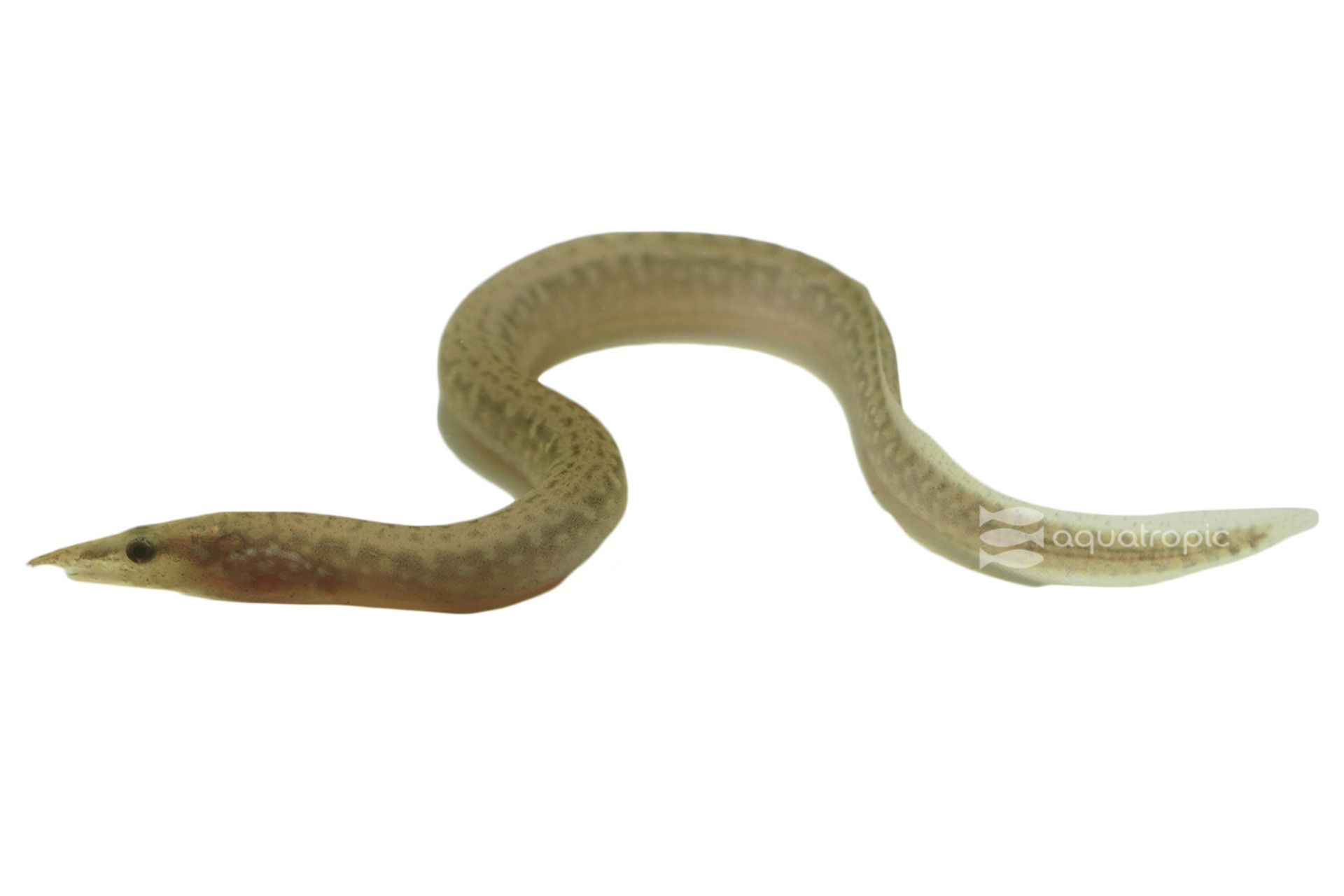The Beauty Of A Starry Night

In North America, the freshwater eel best described as Mastacembelus frenatus is more commonly known as Spiny Longtail Eel. They are also sometimes called the East African Spiny Eel, and perhaps more poetically, the African Starry Night Eel. Someone handing out common names in Zimbabwe was a bit of a contrarian, because there the eel is known as the Shorttail Eel. In the wild, these Eels are only found in Africa. They are native to a number of rivers, river basins and lakes in Africa, including the Zambezi, the Okavango, and Congo Rivers. They've also been reported from some rivers in Tanzania, but they are most famous for being one of the species of Mastacembelus from Lake Tanganyika and Lake Victoria.
They mostly live in the rivers themselves, and when they are found in lakes, they are generally closer to the mouth of the river than not. They are sometimes even collected in areas of substantial current. Regardless of where the habitat they choose, they live their lives near the substrate where they are always ambush hunters and will jump on any correctly sized prey that gets too close to their hiding place. They are opportunistic eaters and will not really discriminate between invertebrates (terrestrial or aquatic) and fish. This bottom dwelling lifestyle has resulted in a fish that no longer even has a swim bladder!
The Longfin Spiny Eel is somewhat of a rarity in aquariums. Like the rest of the Spiny Eels, they are not being aquacultured commercially (or for this species, at all to our knowledge as of the writing of this article in March 24). When caught in their native range, they are usually considered food, and are reportedly delicious, light and flaky. The record specimen is just shy of four feet long, and so there is plenty of meat. They reach adulthood at closer to one foot long and are rarely seen longer than two feet.
Even with this fairly large adult size, Longfin Spiny Eels don't need that large of an aquarium, as they are somewhat sedentary. A single adult would be just fine in 75 gallons with some room for other fish. If you'd like to keep more than one, they can be territorial when they get bigger, and we'd suggest a tank twice that size or more. This tank should be carefully covered because like most eels, these will escape out of the most minute opening, and this always ends badly for the fish. The display should have a soft sand substrate, as gravel could irritate their skin. This Eel will appreciate plenty of cover and won't be a risk for plants with the exception of possibly digging some up on accident as they burrow around. As such, good plant choices would be those that aren't rooted in the substrate, and floating plants that dim the aquarium are a great idea.
As these fish are primarily nocturnal, darker tanks mean you'll see them more often. Over time, they'll adapt to daylight feeding and become more active during these hours. Until then, it's important that you get them some food in the between times, where it isn't dark yet, or it isn't light yet. These times can be migrated into brighter light. Mastacembelus frenatus are generally easy to feed, and quicky to adapt to thawed foods in captivity. Small specimens can be fed things like Gamma Mysis, Chopped Prawn, Bloodworm and Tropical Quintet. Larger specimens will like larger chunks of food, and in their case, you can feed market shrimp and fish. Earthworms and Red Wigglers are great foods and are devoured by pretty much everything as long as they are sized appropriately. We recently posted an article on raising your own Red Wigglers, so check that out if you're interested in raising your own food for bigger fish! Live feeder fish are also an exciting way to feed your eels, just make sure you are either raising them yourselves, or getting them from a clean source.
Water chemistry wise, there is nothing too difficult for these eels. They are warm water fish and should be kept in water that is in the upper 70s with a high of 82 degrees Fahrenheit. Mastacembelus frenatus likes a “Tanganyikan” water profile, with a slightly elevated pH, 7.0 to 8.5 or so, and relatively hard water, at 100-150ppm.
Like most other Mastacembelus, the Longfin Spiny Eels are actually quite peaceful, with the exception of other Eels, as we referenced. As such, they are good fits for community aquariums as long as the other inhabitants aren't snack sized. Avoid fish that are too aggressive as the eels will end up getting picked on. Mastacembelus frenatus make great aquarium inhabitants; they hardy and exceptionally cool. Give them a large display with lots of places to hide and you'll enjoy this unique fish for years to come. Head over to your LFS and ask them for a Longfin Spiny Eels from Aquatropic today!